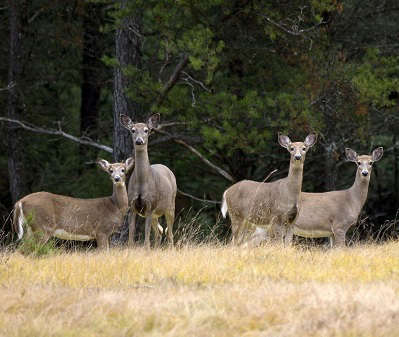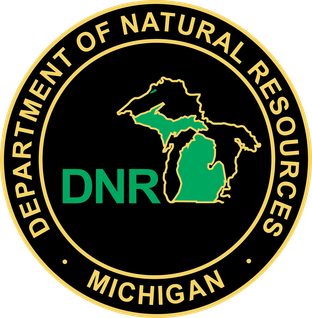Montcalm County, MI deer suspected positive for chronic wasting disease
A 3 ½-year-old female deer taken during Michigan’s youth deer hunting season is likely to be the 10th free-ranging deer in the state found to have chronic wasting disease. The animal was harvested in Montcalm Township in Montcalm County, and preliminary tests indicate the animal may be positive for CWD. The DNR is awaiting final confirmation from the Michigan State University Veterinary Diagnostic Laboratory.
The suspect deer was harvested by a youth hunter during the September youth season. The hunter voluntarily took the animal to a DNR deer check station and submitted the animal for testing.
“We cannot thank this family enough for bringing their deer to a check station,” said Dr. Kelly Straka, DNR state wildlife veterinarian. “Without their effort, the disease may have gone undetected in this area. We encourage hunters from any part of the state, especially the south-central Lower Peninsula, to have their deer tested.”
CWD is a fatal neurological disease that affects white-tailed deer, mule deer, elk and moose. It is caused by the transmission of infectious, self-multiplying proteins (prions) contained in saliva and other body fluids of infected animals. Susceptible animals can acquire CWD by direct exposure to these fluids, from environments contaminated with these fluids or the carcass of a diseased animal.
Some CWD-infected animals will display abnormal behaviors, progressive weight loss and physical debilitation; however, deer can be infected for many years without showing internal or external symptoms. There is no cure; once a deer is infected with CWD, it will die.
“Infected deer don’t necessarily look sick,” Straka said. “Having your deer tested is the only way to know if it has chronic wasting disease.”
Since May 2015, the DNR has actively conducted surveillance for CWD. To date, more than 14,000 deer have been tested since the first positive case was found, with nine cases of CWD confirmed in free-ranging white-tailed deer previously identified in Ingham and Clinton counties.
To date, there is no evidence that CWD presents any risk to non-cervids, including humans, either through contact with an infected animal or from handling venison. However, as a precaution, the U.S. Centers for Disease Control and the World Health Organization recommend that infected animals not be consumed as food by either humans or domestic animals.
As additional deer have tested positive for CWD within Michigan, the DNR has put specific regulations in place. Currently, there are two CWD Core Areas, which are deer management units (DMUs) 333 and 359. To review regulations related to those areas, visit michigan.gov/cwd.
Regarding this new suspect positive deer, the DNR is determining next steps as outlined in the CWD Response and Surveillance Plan. Proposed recommendations include:
Creating a nine-township Core Area that would include Douglass, Eureka, Fairplain, Maple Valley, Montcalm, Pine and Sidney townships in Montcalm County, and Oakfield and Spencer townships in Kent County. Within the Core Area specifically:
Instituting mandatory registration of deer within 72 hours of harvest, starting Nov. 15.
Removing antler point restrictions for the restricted tag of the combo deer license if license is used within the nine-township Core Area.
Allowing antlerless deer to be tagged using the deer or deer combo license(s) during the firearm, muzzleloader and late antlerless seasons.
Allowing the public to pick up road-killed deer and allow them to be possessed with a salvage tag if the deer head is submitted for testing within 72 hours of pick-up.
Allowing disease control permits, effective immediately, for landowners with five or more acres within the nine-township Core Area.
Banning the feeding and baiting of deer in Kent and Montcalm counties, effective Jan. 2, 2018, and encouraging hunters not to bait and feed in these areas immediately.
“With some hunting seasons already under way, we are not recommending that a new deer management unit be created for the area at this time,” said Chad Stewart, DNR deer specialist. “If you purchase or have purchased licenses for DMUs 354 or 341, they can be used in the new Core Area, but it’s critical for hunters to follow the final regulations related to those nine townships.”
Starting Nov. 1, several new check stations near the new Core Area will accept deer for CWD testing. Archery hunters are strongly encouraged to have their deer checked at existing check stations during the early archery season.
A complete list of check stations, including locations and hours, as well as weekly CWD updates, are available at michigan.gov/cwd.




